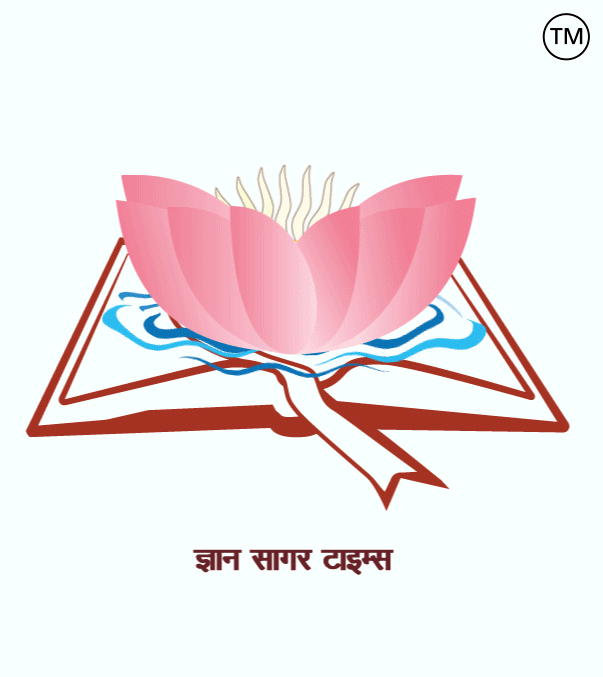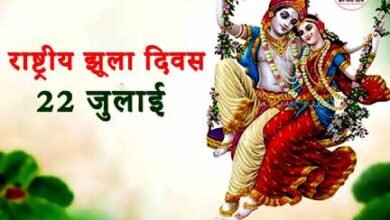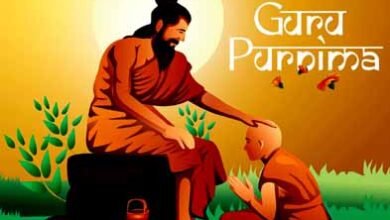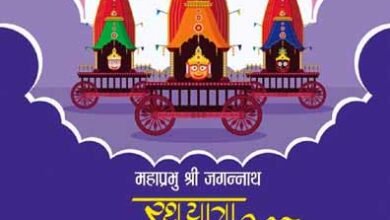
महाशिवरात्रि…
माघकृष्ण चतुर्दश्यामादिदेवो महानिशि। ॥
शिवलिंगतयोद्रूत: कोटिसूर्यसमप्रभ:॥
हिन्दू पंचांग के अनुसार वर्ष का अंतिम महीना ‘फाल्गुन’ का महीना चल रहा है. फाल्गुनी नक्षत्र होने के कारण ही इस महीने का नाम फाल्गुन पड़ा. इस महीने से धीरे धीरे गरमी की शुरुआत होती है और सर्दी कम होने लगती है. बसंत का प्रभाव होने से इस महीने में प्रेम और रिश्तों में मधुर संबंध होते हैं. वैसे तो इस महीने में कई पर्व और त्यौहार मनाए जाते हैं लेकिन, उनमे से प्रमुख पर्व में फाल्गुन कृष्ण त्रयोदशी को भगवान् शिव की उपासना का महापर्व शिवरात्री और पूर्णिमा को रंगों का पर्व होली मनाया जाता है.
पौराणिक ग्रन्थों के अनुसार, एक ऐसे भगवान जिनके कई नाम हैं और हर नाम की अलग-अलग विशेषता है जैसे रूद्र. रूद्र का अर्थ होता है रोनेवाला, उसी प्रकार उनका एक नाम है शिव. वैसे तो देखा जाय तो शिव की विवेचना ज्ञानी लोग अपने-अपने तरीके से करते हैं. आखिर शिव का अर्थ है क्या? तार्किक दृष्टिकोण हो या वैज्ञानिक दोनों दृष्टिकोण से भी देखते है तो भी शिव का अर्थ और उसके मायने भी एक ही होते हैं. शिव का अर्थ होता है “ शिव” शब्द का अर्थ “शुभ, स्वाभिमानिक, अनुग्रहशील, सौम्य, दयालु, उदार, मैत्रीपूर्ण” होता है”. लोक व्युत्पत्ति में “शिव” की जड़ “शि” है जिसका अर्थ है जिन में सभी चीजें व्यापक है और “वा” इसका अर्थ है “अनुग्रह के अवतार”.
ऋग वेद में शिव शब्द एक विशेषण के रूप में प्रयोग किया जाता है, रुद्रा सहित कई ऋग्वेदिक देवताओं के लिए एक विशेषण के रूप में है. शिव शब्द ने “मुक्ति, अंतिम मुक्ति” और “शुभ व्यक्ति” का भी अर्थ दिया गया है. शिव अनादि तथा सृष्टि प्रक्रिया के आदिस्रोत हैं और यह काल महाकाल ही ज्योतिषशास्त्र के आधार हैं. शिव का अर्थ यद्यपि कल्याणकारी माना गया है, लेकिन वे हमेशा लय एवं प्रलय दोनों को अपने अधीन किए हुए हैं. शिव सभी को समान दृष्टि से देखते है इसलिये उन्हें महादेव कहा जाता है. शिव के कुछ प्रचलित नाम, महाकाल, आदिदेव, किरात, चन्द्रशेखर, जटाधारी, नागनाथ, मृत्युंजय, त्रयम्बक, महेश, विश्वेश, महारुद्र, विषधर, नीलकण्ठ, महाशिव, उमापति, काल भैरव, भूतनाथ आदि.
वेद के अनुसार इनका नाम रूद्र भी है, वहीं ऋग्वेद में जहां सूर्य, वरुण, वायु, अग्नि, इंद्र आदि प्राक्रतिक शक्तियों की उपासना की जाती है वहीं ‘रूद्र’ का भी उल्लेख किया गया है. सागर मंथन से पहले भगवान शिव को रूद्र के नाम से जाना जाता था. रूद्र जिन्हें विनाशकारी शक्तियों के प्रतीक के रूप में गौण देवता माने जाते थे, लेकिन सागर मंथन के बाद रूद्र नये रूप में शिव बने. शिव का विचित्र अमंगल स्वरूप दुसरे देवताओं से अलग है. शिव जो कि, नंग-धडंग, शरीर पर राख लपेटे या मले हुए, जटाजूटधारी, सर्प लपेटे, गले में हडडीयों एवं नरमुंडों की माला पहने, हाथों में त्रिशूल व डमरू, माथे पर एक और आँख, सिर पर चन्द्रमा को धारण किये हुए और उनका वाहन नंदी तथा गण भूत, प्रेत या पिशाच.
ऐसे अबधूत रूप के धनी जिन्हें औघरदानी भी कहा जाता है और जो सबके लिए सुगम्य चाहे वो, देव हों या दानव. ऐसे अदभुत स्वरूप के स्वामी जो कई प्रकार के चिन्हों का प्रयोग करते है और हर चिन्ह के अपने-अपने महत्व हैं. भगवान शिव को त्रयंबक भी कहा जाता है, आमतौर पर देव हों या दानव उनकी दो ही आँख होती है लेकिन, भगवान शिव की तीसरी आँख भी है. जिस प्रकार दो आँखों से भौतिक पदार्थों को ही देख सकते है उसी प्रकार तीसरी आँख का मतलब होता है ‘बोध’.‘बोध’ का अर्थ होता है ऊर्जा को विकसित करना या यूँ कहें कि, अपने स्तर को ऊँचा करना. शिव के कई नाम हैं उन्हें सोम या सोमसुंदर भी कहा जाता है. सोम का एक और अर्थ होता है चंद्रमा वैसे तो सोम का अर्थ होता है नशा. पुरानों में चंद्रमा को नशे का श्रोत भी कहा गया है.
पुरानों में शिव को योगी व अनंत भी कहा गया है और उनके हाथों में हमेशा एक त्रिशूल होता है. त्रिशूल जो जीवन के तीन मूल आयाम है यह उसी को दर्शाता है. त्रिशूल में तीन कोण होते हैं उन्हें इड़ा, पिंगला और सुषुम्ना भी कहते हैं. ये तीनों प्राणमय कोष मानव तंत्र के तीन मुलभुत नाड़ियाँ हैं जिसे हम सभी बाईं, दाहिनी और मध्य के नाम से जानते हैं. मानव शरीर में इन तीन नाड़ियों से प्राणवायु का संचार होता है. भगवान शिव के गले में सर्प की माला होती है. योग में कुंडलिनी का वर्णन होता है, और सर्प को कुंडलिनी का प्रतीक भी माना जाता है. कुंडलिनी का अर्थ होता है ऊर्जा. अगर ऊर्जा स्थिर हो तो उसका पता नहीं चलता है और उसे जाग्रत कर दिया जाय तो उसके स्वरूप का अहसास होता है.
भगवान शिव के मूल मंत्र में पांच मन्त्रों का समायोजन है, जिसे पंचाक्षर भी कहा जाता है. प्रकृति में मौजूद पांच तत्वों के प्रतीक को ही पंचाक्षर माना जाता है. जिस प्रकार मानव शरीर में पांच द्वार कहे गये है और पाँचों द्वार की शुद्धि की जाती है, और इन पांच केन्द्रों को जगाकर योग क्रिया की जाती है. पुरानों के अनुसार भगवान शिव एक लोटे जल और एक वेलपत्र से खुश या प्रसन्न हो जाते हैं. आखिर विल्वपत्र या वेल पत्र शिव को इतना प्रिय क्यों है? पौराणिक ग्रंथो के अनुसार, बेल के वृक्ष को सम्पूर्ण सिद्धियों का आश्रय स्थल भी कहा जाता है. चूकिं बेलपत्र को भगवान शिव के त्रिनेत्र रूप का प्रतीक भी माना जाता है या यूँ कहें कि, इसकी तीन पत्तियों को सत्व, रज और तम के रूप में भी जाना जाता है.
शिव महापुराण के अनुसार, भगवान शिव मात्र एक लोटा जल, बेलपत्र, मंत्र जप से ही प्रसन्न हो जाते है. अत: मनुष्य अगर शिव का इतना भी पूजन कर लें तो पाप कर्मों से सहज मुक्ति प्राप्त हो जाती है. शिव की आराधना, साधना, उपासना से मनुष्य अपने पापों एवं संतापों से इसी जन्म में मुक्ति पा सकता है.
फाल्गुन महीने के कृष्ण पक्ष की त्रयोदशी को मनाया जाने वाला महापर्व है महाशिवरात्रि. इस दिन त्रिदेवों के एक देव महादेव की उपासना की जाती है. पौराणिक ग्रन्थों के अनुसार, फाल्गुन महीने के कृष्ण पक्ष की त्रयोदशी को भगवान शंकर का ब्याह या यूँ कहें कि, विवाह माता पार्वती से हुआ था. माता पार्वती भी भगवान गंगाधर को पाने के लिए कठोर तपस्या की थी. उसके बाद माता का विवाह भगवान विशेश्वर से हुआ था. भगवान मृत्युंजय ने माता पार्वती से विवाह के दौरान सात वचन दिए थे, तभी से ये परम्परा वर्तमान समय तक चला आ रहा है.
वैसे तो प्रत्येक मास के कृष्णपक्ष की त्रयोदशी ‘शिवरात्रि’ कहलाती है, लेकिन फाल्गुन कृष्णपक्ष की त्रयोदशी को ‘महाशिवरात्रि’ कहा जाता है. पौराणिक ग्रन्थों के अनुसार, इस दिन शिवोपासना करने से भक्ति और मुक्ति दोनों ही देने वाली मानी जाती है. कहा जाता है कि, इस दिन की अर्धरात्रि के समय भगवान शिव लिंगरूप में प्रकट हुए थे, इसलिए शिवरात्रि व्रत में अर्धरात्रि में रहने वाली त्रयोदशी ग्रहण करनी चाहिए. नारद संहिता के अनुसार, फाल्गुन कृष्णपक्ष की त्रयोदशी का व्रत करने से अश्वमेध यज्ञ का फल मिलता है. जबकि, ईशान संहिता के अनुसार इस दिन ज्योतिर्लिग का प्रादुर्भाव हुआ था.
पौराणिक ग्रन्थों के अनुसार, फाल्गुन कृष्ण त्रयोदशी को ही महाशिवरात्रि मनाने के पीछे कारण है कि इस दिन क्षीण चंद्रमा के माध्यम से पृथ्वी पर अलौकिक लयात्मक शक्तियां आती हैं, जो जीवनीशक्ति में वृद्धि करती हैं यद्यपि त्रयोदशी का चंद्रमा क्षीण रहता है, लेकिन शिवस्वरूप महामृत्युंजय दिव्यपुंज महाकाल आसुरी शक्तियों का नाश कर देते हैं.
========== ========= ===========
Mahashivratri…

Maaghakrshn Chaturdashyaamaadidevo Mahaanishi॥
Lingatayodrutah: Kotisooryasamaprabhah:॥
According to the Hindu calendar, the last month of the year, the month of ‘Phalgun’ is going on. Due to the presence of Phalguni Nakshatra, this month was named Phalguna. From this month, summer gradually begins and winter begins to subside. Due to the influence of spring, there are sweet relationships in love and relationships in this month. Although many festivals and festivals are celebrated in this month, but the main festivals among them are Shivratri, the great festival of worship of Lord Shiva, on Phalgun Krishna Trayodashi and Holi, the festival of colors, is celebrated on the full moon day.
According to mythological texts, there is a God who has many names and each name has different characteristics like Rudra. Rudra means one who cries, similarly one of his names is Shiva. Actually, knowledgeable people discuss Shiva in their own ways. After all, what is the meaning of Shiva? Be it a logical point of view or a scientific point of view, the meaning and significance of Shiva is the same. Shiva means “Shiva”. The meaning of the word Shiva is “auspicious, self-respecting, gracious, gentle, kind, generous, friendly”. In folk etymology, the root of “Shiva” is “Shi” which means the one in whom all things are present and “va” means “incarnation of grace”.
The word Shiva is used as an adjective in the Rig Veda, as an epithet for several Rigvedic deities, including Rudra. The word Shiva has also been given the meaning of “liberation, final liberation” and “auspicious person”. Shiva is eternal and the original source of the creation process and this Kaal Mahakaal is the basis of astrology. Although the meaning of Shiva is considered beneficial, he always has both rhythm and destruction under his control. Shiva sees everyone equally, that is why he is called Mahadev. Some popular names of Shiva are Mahakal, Adidev, Kirat, Chandrashekhar, Jatadhari, Nagnath, Mrityunjay, Trayambak, Mahesh, Vishvesh, Maharudra, Vishdhar, Neelkanth, Mahashiv, Umapati, Kaal Bhairav, Bhootnath etc.
According to the Vedas, his name is also Rudra, whereas in the Rigveda, where natural powers like Sun, Varun, Vayu, Agni, Indra etc. are worshipped, ‘Rudra’ has also been mentioned. Before Sagar Manthan, Lord Shiva was known as Rudra. Rudra was considered a minor deity as a symbol of destructive powers, but after the churning of the ocean, Rudra became Shiva in a new form. The strange inauspicious form of Shiva is different from other gods. Shiva who is naked, with ashes wrapped or rubbed on his body, wearing Jatajut, snakes wrapped around him, wearing a garland of bones and Narmundas around his neck, trident and damru in his hands, one more eye on his forehead, holding the moon on his head and His vehicle is Nandi and his companions are ghosts, ghosts or vampires.
Those who are rich in the form of non-dhoots, who are also called Aughardani and who are accessible to everyone, be they gods or demons. The owner of such a wonderful form uses many types of symbols and each symbol has its own significance. Lord Shiva is also called Triyambaka, usually whether a god or a demon, he has only two eyes, but Lord Shiva also has a third eye. Just as we can see physical things with only two eyes, similarly the third eye means ‘perception’. ‘Perception’ means developing energy or in other words, raising one’s level. Shiva has many names, he is also called Som or Somsundar. Another meaning of Soma is Moon. However, Soma means intoxication. In ancient times, the moon has also been said to be the source of intoxication.
In the ancients, Shiva has also been called Yogi and Anant and he always has a trident in his hands. Trishul represents the three basic dimensions of life. Trishul has three angles, they are also called Ida, Pingala and Sushumna. These three vital cells are the three basic nadis of the human system which we all know as left, right and middle. Vital air circulates through these three nerves in the human body. Lord Shiva has a snake garland around his neck. Kundalini is described in yoga, and the snake is also considered a symbol of Kundalini. Kundalini means energy. If the energy is stable then it is not detected and if it is awakened then its form is felt.
There is a combination of five mantras in the basic mantra of Lord Shiva, which is also called Panchakshar. Panchakshar is considered to be the symbol of the five elements present in nature. Just as there are said to be five gates in the human body and purification of the five gates is done, and yoga is performed by awakening these five centres. According to the ancients, Lord Shiva becomes happy with a pot of water and a Velpatra. After all, why is Vilapatra or Vel Patra so dear to Shiva? According to mythological texts, the Bael tree is also said to be the shelter of complete accomplishments. Since Belpatra is also considered a symbol of the Trinetra form of Lord Shiva or rather, its three leaves are also known as Satva, Raja and Tama.
According to Shiva Mahapuran, Lord Shiva becomes happy just by a pot of water, Belpatra and chanting mantra. Therefore, if a person worships Shiva even this much, he easily gets freedom from sinful deeds. By worshiping, worshiping and worshiping Shiva, man can get freedom from his sins and sufferings in this very birth.
Mahashivratri is a great festival celebrated on Trayodashi of Krishna Paksha of Phalgun month. On this day, Mahadev, one of the Gods of the Trinity, is worshipped. According to mythological texts, Lord Shankar was married to Mother Parvati on Trayodashi of Krishna Paksha of Phalgun month. Mother Parvati also did severe penance to get Lord Gangadhar. After that mother was married to Lord Visheshwar. Lord Mrityunjay had given seven promises during his marriage to Mother Parvati, since then this tradition has been continuing till the present time.
Although Trayodashi of Krishna Paksha of each month is called ‘Shivratri’, but Trayodashi of Phalgun Krishna Paksha is called ‘Mahashivratri’. According to mythological texts, worshiping Shiva on this day is considered to give both devotion and liberation. It is said that Lord Shiva appeared in the form of Linga at midnight on this day, hence during Shivratri fast one should observe Trayodashi which remains at midnight. According to Narad Samhita, fasting on Trayodashi of Phalgun Krishna Paksha gives the results of Ashwamedha Yagya. Whereas, according to Ishan Samhita, Jyotirlinga appeared on this day.
According to mythological texts, the reason behind celebrating Mahashivratri on Phalgun Krishna Trayodashi is that on this day supernatural rhythmic powers come to the earth through the weak moon, which increases the vitality. Although the moon of Trayodashi remains weak, but Mahamrityunjaya divine mass in the form of Shiva is present. Mahakaal destroys demonic powers.





